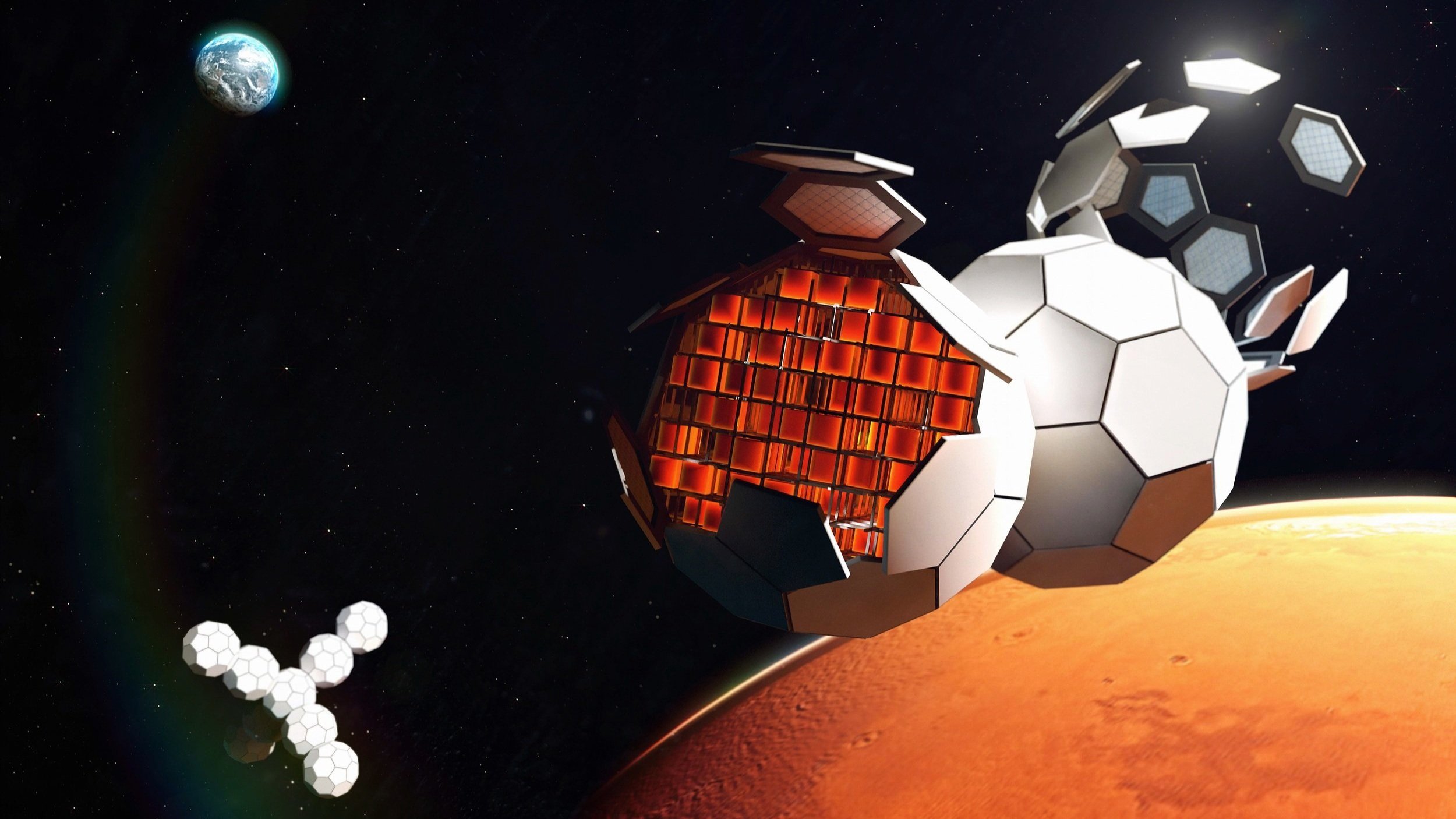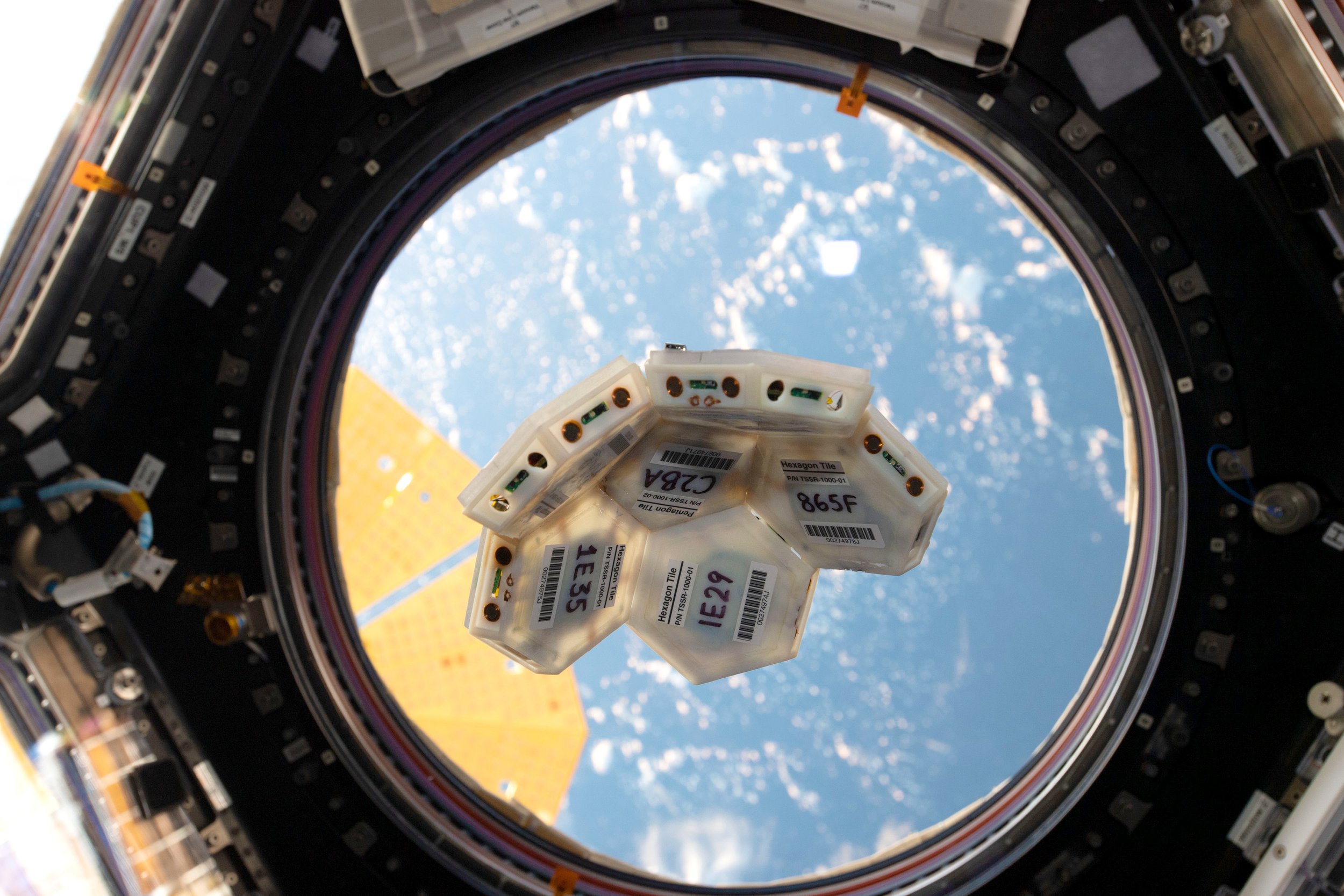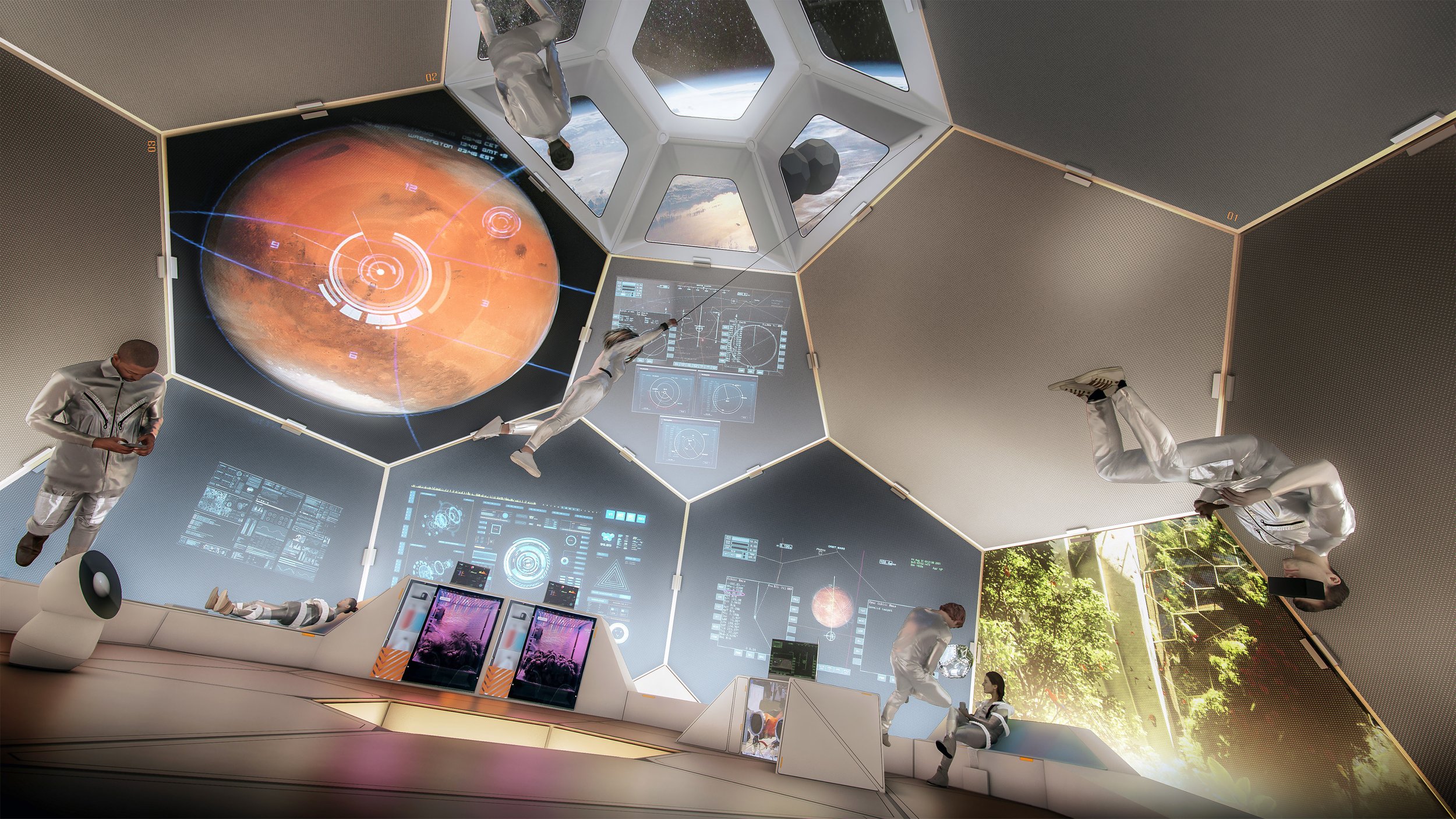SPACE HABITAT R&D
TESSERAE: Self-Assembling Prototypes

Artist's render courtesy of TU Dortmund Fraunhofer Institute / MIT Space Exploration Initiative
As humanity’s ambitions in space expand, we are quickly outgrowing the small, cylindrical tubes that have defined the first century of space flight. Aurelia Institute is committed to building the coming generations of space habitats—the structures we will inhabit as we travel, work, play, and live in space.
The future lies in self-assembling, adaptive, and reconfigurable structures. Rather than transporting fixed, rigid modules and risking astronaut Extravehicular Activities (EVAs) during construction, we can lower payload weight, reduce assembly complexity, and revolutionize space-structure modularity by relying on in-space manufacturing and self- assembly of large, habitable volumes. Aurelia Institute's first test case for this new method of reconfigurable space habitation is TESSERAE (Tessellated Electromagnetic Space Structures for the Exploration of Reconfigurable, Adaptive Environments).
Begun as Aurelia founder Ariel Ekblaw’s PhD Thesis at MIT, TESSERAE’s next phase is now actively underway, as Aurelia Institute iteratively builds and tests the TESSERAE hardware platform towards a future crewed habitat mission.
Through TESSERAE, Aurelia is working toward geodesic dome habitats, microgravity concert halls, space cathedrals—the next generation of space architecture that will delight, inspire, and protect humanity for our future in the near, and far, reaches of space.

On April 08, 2022, a TESSERAE tile assembly prototype was flown on Ax-1, Axiom’s research mission to the International Space Station. This first-ever private ISS mission was flown in partnership with SpaceX, and TESSERAE was among the 25 experiments on the 10-day mission. This was TESSERAE’s second in-space test.
Following this successful experiment, the R&D team is working on an expanding list of flight missions to test larger tiles and do on-orbit demonstration assembly tests outside the ISS. This includes several parabolic research flights to test next-generation TESSERAE tiles with improved algorithmic design for autonomous self-assembly and modifications to the physical shell to improve bonding reconfigurability.
A complete set of 32 fifth-generation TESSERAE tiles is scheduled to be delivered to the ISS in January 2026 for an on-orbit demonstration of the full buckyball assembly. An ISS crew member will set up the experiment in a section of the station, initiate the tiles’ deployment, and document the tiles’ autonomous connection in microgravity.
The TESSERAE platform is being taken forward into full-scale station design through our Orbital Biolab Case Study and Space Habitat Pavilion work streams.




